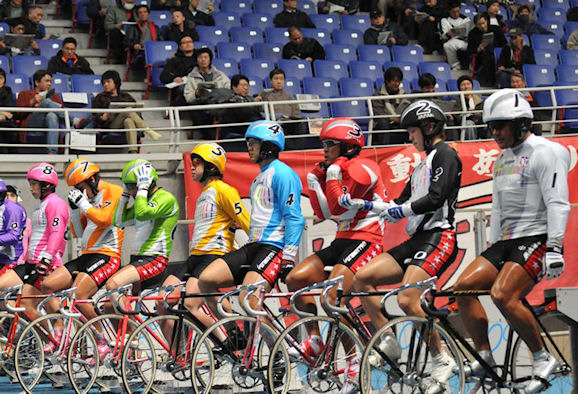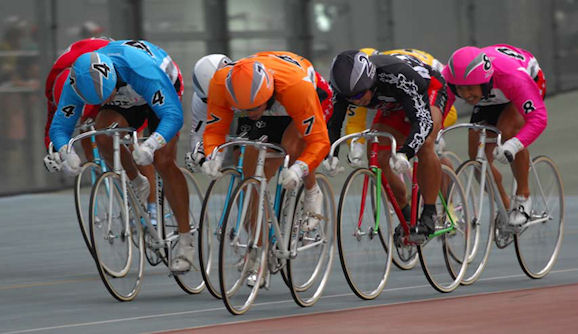This article first appeared in the Mar/Apr 2012 issue of World Gaming magazine.
For readers who enjoy a flutter on the horses, trots or dogs, World Gaming would like to present another exciting sport that could tickle your fluttering fancy. Japanese keirin racing is a two-kilometer velodrome cycling event that is specifically designed for pari-mutuel betting.
Keirin racing began in 1948. Since then, some 4,000 Japanese professional keirin racers have made their living by powering their handmade steel steeds to furious 70 kilometer an hour sprint finishes.
The popularity of Keirin racing in Japan has grown to the point that the country has around 50 velodromes, varying in length from 333 to 500 metres. These velodromes see 20 million people passing through their gates annually. The result is an annual betting turnover of US$18 million.

There are currently no legal casinos in Japan, but there are four authorized “public sports” where betting is permitted: horse racing (keiba), motorboat racing (kyotei), motorbike racing (auto race) and keirin. Lotteries, pachinko, slot machines and mahjong are also run using various loopholes. Because of the gaming aspect, keirin is highly regulated. There are four race referees and videotape scrutiny, and the JKA (the body which regulates cycling and motorbike racing) ensures that all bikes are strictly standardized.
There are a number of different bets available:
- Exacta: first two in order
- Quinella: first two in any order
- Trifecta: first 3 in exact order
- Trio: first 3 in any order
- Quinella place (also known as a “wide” bet): selecting 2 to finish in the first 3, in any order
Velodrome meetings vary in length from a single night to six days, with 12 races each day being standard. The quality of the racing improves as the meeting progresses. Keirin generally sees pools of around 10 million yen (approximately US$130,000) a race, but the big races on the calendar can have ten times this amount bet on them.
Some venues offer internet betting, making it accessible to any racing fan. You can bet on a K-3 (picking the winner of the meeting’s last three races), a K-5 (picking the winner of the meeting’s last five races), and the “big dream” (picking the first two in any order of the last four races). Pools in the K-5 and the big dream carry over if there are no winning tickets! Worth another bet, we say.

Now that you have laid your bets, what are you going to see in a typical keirin? It may well look like the start of a horse race as the riders (six to nine of them), who are assigned a position, number and color for identification, move out of stationary starting blocks. From here, they settle in behind a small motorbike (called a “derny”) that paces the riders, gradually increasing speed up to 50 kilometers per hour over the next 1 to 1.2 kilometers. The derny then leaves the track, and the race is well and truly on! The early jockeying stage whilst the derny is still on the track can be very interesting as riders vie for tactical position in readiness for the final laps and the explosive sprint to the line. As the speed reaches a crescendo, fighting and holding position becomes the bread and butter of the successful rider. Steely nerves, strength, power and supreme bike handling skills win the day. Of course high stakes, speed and power is a dangerous combination. It can all go wrong and there have been some spectacular spills over the years, all adding to the lure of professional keirin.
The most important tournaments are about to kick off, beginning in March with the Japan Championship, which boasts the world’s third richest purse. Other dates to add to your calendar include the Prince Takamatsu Memorial Cup in June and the Prince Tomohito Cup in July. In August there is the All-Japan Selection, and in September the All-Star Keirin.

These events culminate with the sport’s most important race, the Keirin Grand Prix, which is held every year on December 30. The champion is determined in a single race that is contested by the year’s top nine riders.
| Keirin fun fact |
| The winner of the 2011 Keirin Grand Prix, 43 year old Koji Yamaguchi, was the top earning keirin cyclist in 2011 with 198 million yen. He achieved this victory an incredible 13 years after his first Keirin Grand Prix win, which itself was at the relatively mature age of 30! |







